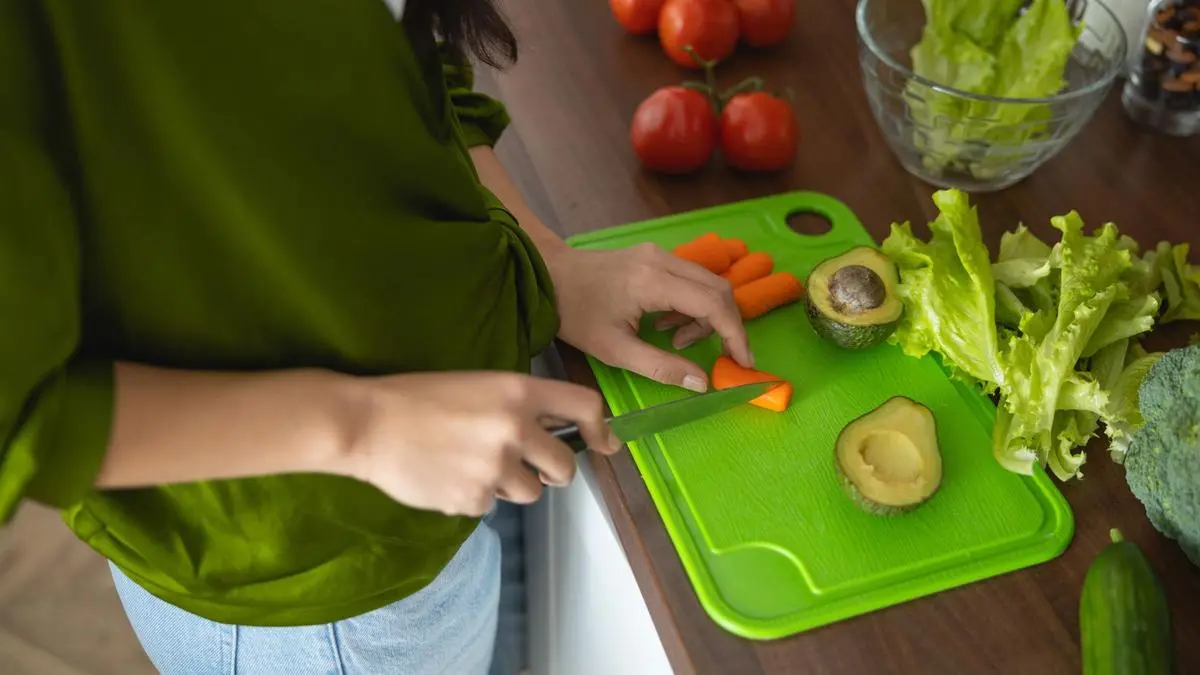Everyone has one: a scratched, stained plastic cutting board that’s been in your kitchen for years.
Despite how many times you say to yourself, “I should get a new one”, you never do — but now, it’s officially time to buy a replacement.
Research published in peer-reviewed scientific journal Environmental Science and Technology found that plastic cutting boards release tiny pieces of plastic when you chop on them, which can end up in your food.
Know the news with the 7NEWS app: Download today
Before you start panicking, keep reading — I talked to cooking experts and engineers about whether plastic cutting boards are safe to use, and the best alternatives to buy if you want to reduce your exposure to microplastics.
So, are plastic cutting boards safe to use?
Long story short, yes, plastic cutting boards are generally safe to use, according to all the experts I spoke to.
However, they can cause microplastics (particles that have a diameter between 1mm and 5mm) to end up in your food.
As a knife’s blade scratches a plastic cutting board’s surface, tiny pieces of plastic get released that stick to your ingredients, assistant professor of chemical engineering at Texas A&M University Dr Manish Shetty said.
They’re too small to see, so you may ingest them, he said.
Particles that stick to the knife’s blade or cutting board go down the drain when you clean them, so there’s an environmental impact to consider, too.
That said, how worried should you be?
“According to the study’s estimation, people could be exposed to about 50 grams of microplastics per year through plastic cutting boards, which seems like a huge amount, but isn’t compared to other sources of microplastics you’re exposed to,” assistant professor in the department of civil and environmental engineering at the University of Wisconsin-Madison Hoaran Wei said.
“The study also didn’t find any toxicity effects, which is a good sign, and indicates that this is a safe process.”
It is important to note, however, that the study’s findings are limited — researchers conducted testing on mice and only tracked health effects for about three days after exposure.
Plus, microplastics are difficult to quantify and if another team of researchers did the same study, their findings may vary, Wei said.
Additional research will allow scientists to make more definitive assessments, but this study is a good starting point.
“It makes us think a lot more about our sources of consumption,” Shetty said.
“When you talk about microplastics impacting the environment, it can feel like an arm’s length away, if not more.
“But when you talk about human health, it feels a lot closer.”
The overall takeaway? You’re exposed to microplastics while using plastic cutting boards, but, as far as researchers can tell right now, not in an excessive amount that could pose health risks, Wei said.
You can use a cutting board made from an alternative material if you want to cut down your microplastic exposure, but all materials have benefits and drawbacks you’ll need to weigh.
How to pick the best plastic cutting board alternatives
While shopping for plastic cutting board alternatives, experts recommend thinking about the following factors:
- Material: Instead of plastic, choose a cutting board made from wood, rubber, silicone or composite, all of which are food-safe and gentle on knives, experts say. Never use a glass, stone or stainless steel cutting board — these materials are very hard on knives and can damage their blades, Tracy Zimmermann, an assistant professor of hospitality management who teaches culinary arts at the New York City College of Technology, said.
- Care: Rubber, silicone and composite cutting boards are easier to clean compared to wood options, Zimmermann said. They’re dishwasher-safe, and you can sanitise them with a chemical solution if needed. Wood has antibacterial properties that don’t allow bacteria to grow and fester, but you can’t put these types of cutting boards in the dishwasher or use chemical sanitisers on them. Instead, you hand-wash them with dish soap and water.
- Lifespan: Once there are deep scratches and nicks, lingering odours or permanent stains on the surface of a rubber, silicone or composite cutting board, you need to retire it. However, you can sand down the surface of wood cutting boards as they get scratched and nicked, so you don’t have to replace them as often.
Which material should I choose?
“Wood is always a great choice due to its antimicrobial properties,” Zimmermann said.
“It also has a better feel and is easier on knife blades compared to plastic.”
However, these types of cutting boards require some upkeep — you need to oil or condition them periodically to make sure they stay in good shape.
Additionally, wood cutting boards absorb moisture, so they’re not great for cutting ingredients like raw meat and fish, vice president of merchandising at Sur La Table Alycia Johnson said.
“Composite wood fibre cutting boards are quite popular right now because they’re so durable and good on your knives,” Johnson said.
“They’re also really easy to clean since you can throw them in the dishwasher.”
Similar to wood, silicone has some give, making it easy on knife blades, and similar to plastic, it’s dishwasher-safe and inexpensive, Zimmermann said.
However, silicone isn’t the sturdiest material, so when you pick the board up, it tends to bend.
That might be appealing to you — you can fold silicone cutting boards horizontally or vertically to create a funnel of sorts, making it convenient to dump food into pans or scraps into the trash.


